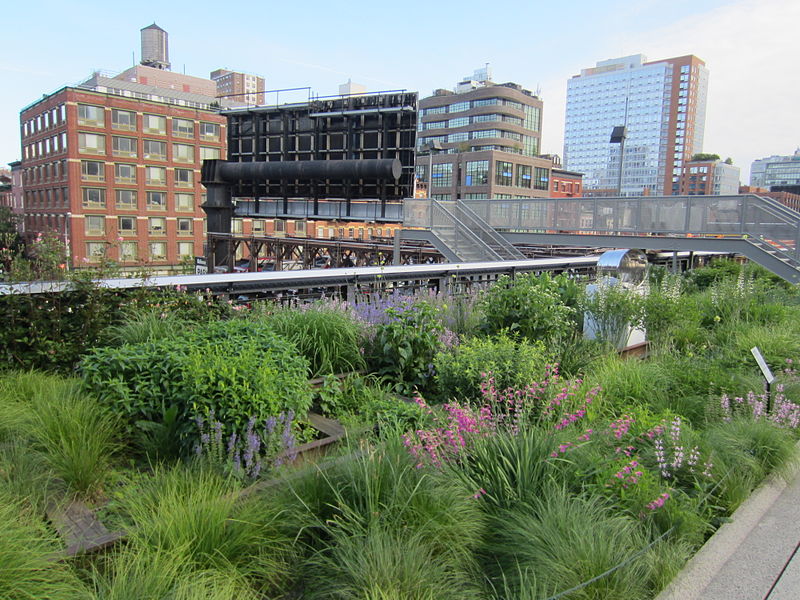Speculative architecture
Contents |
[edit] Introduction
Speculative architecture describes a proposed architectural scenario influenced by technology and its possible impact on space and time. It is a discipline that is sometimes applied to possibilities in urban planning that may never be realised but are instead meant to stretch the boundaries of the creative process.
In a speculative architecture, the project is less about how the building is physically shaped and more about how the structure operates based on available technologies. The sustainably oriented consequences of its operation should be designed to have a positive future impact on not only the physical representation but also on the culture and the community surrounded by the building.
[edit] Early history
Archigram was a UK-based art and architecture collective that came to prominence in the 1960s. As part of the burgeoning avant garde of the time, it aimed to explore extreme alternatives for urban design as a response to what it perceived to be the dullness and intellectual conservatism of modern architecture.
Virtually all of their plans and ideas remained unrealised, freeing them to explore unorthodox and outlandish designs which they often published in their Archigram magazine. They were defined less by a specific set of principles, than by an optimistic spirit that corresponded to the prevailing mood of the 1960s, looking to shake off out-dated ideas and conventions. They were inspired by the technocratic ideas of Buckminster Fuller as well as the American Beat movement and Pop art.
For more information see: Archigram.
[edit] Speculative architecture realised
One example of speculative architecture is New York City’s High Line Park. The urban renewal project of the city’s derelict elevated rail line had little support until an ideas competition brought the forgotten space on Manhattan’s West Side into the spotlight. Entries from around the world included a roller coaster and a lap pool, but the speculative nature of the competition also yielded several viable designs that might not have been realised.

|
| The High Line in New York City opened in 2014; it has since become one continuous, 1.45-mile-long greenway featuring 500+ species of plants and trees. |
This creative exercise is thought to have sparked the imagination of competitors, resulting in imaginative and fanciful renderings. When residents and planners saw the possibilities - both imagined and real - it generated genuine support for the project.
NB This interpretation of speculative architecture should not be confused with speculative development, or speculative construction, which describes a process in which unused land is purchased or a building project is undertaken with no formal commitment from any end users. For more information see: Speculative construction.
[edit] Related articles on Designing Buildings
Featured articles and news
The UK's Modern Industrial Strategy: A 10 year plan
Previous consultation criticism, current key elements and general support with some persisting reservations.
Building Safety Regulator reforms
New roles, new staff and a new fast track service pave the way for a single construction regulator.
Architectural Technologist CPDs and Communications
CIAT CPD… and how you can do it!
Cooling centres and cool spaces
Managing extreme heat in cities by directing the public to places for heat stress relief and water sources.
Winter gardens: A brief history and warm variations
Extending the season with glass in different forms and terms.
Restoring Great Yarmouth's Winter Gardens
Transforming one of the least sustainable constructions imaginable.
Construction Skills Mission Board launch sector drive
Newly formed government and industry collaboration set strategy for recruiting an additional 100,000 construction workers a year.
New Architects Code comes into effect in September 2025
ARB Architects Code of Conduct and Practice available with ongoing consultation regarding guidance.
Welsh Skills Body (Medr) launches ambitious plan
The new skills body brings together funding and regulation of tertiary education and research for the devolved nation.
Paul Gandy FCIOB announced as next CIOB President
Former Tilbury Douglas CEO takes helm.
UK Infrastructure: A 10 Year Strategy. In brief with reactions
With the National Infrastructure and Service Transformation Authority (NISTA).
Ebenezer Howard: inventor of the garden city. Book review.
The Grenfell Tower fire, eight years on
A time to pause and reflect as Dubai tower block fire reported just before anniversary.
Airtightness Topic Guide BSRIA TG 27/2025
Explaining the basics of airtightness, what it is, why it's important, when it's required and how it's carried out.
Construction contract awards hit lowest point of 2025
Plummeting for second consecutive month, intensifying concerns for housing and infrastructure goals.
Understanding Mental Health in the Built Environment 2025
Examining the state of mental health in construction, shedding light on levels of stress, anxiety and depression.






















